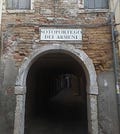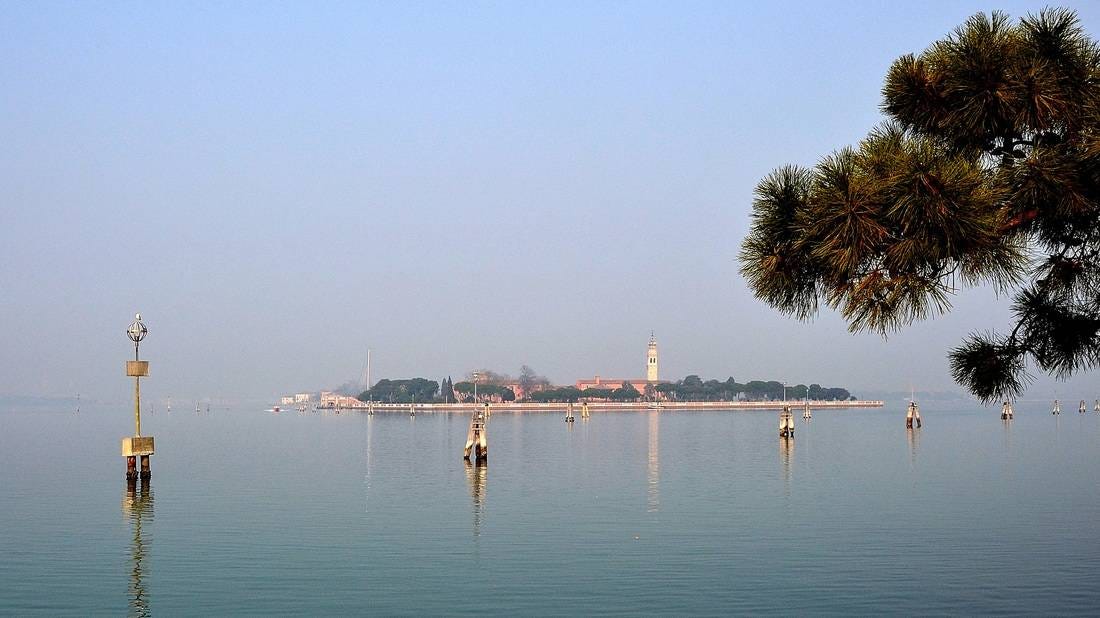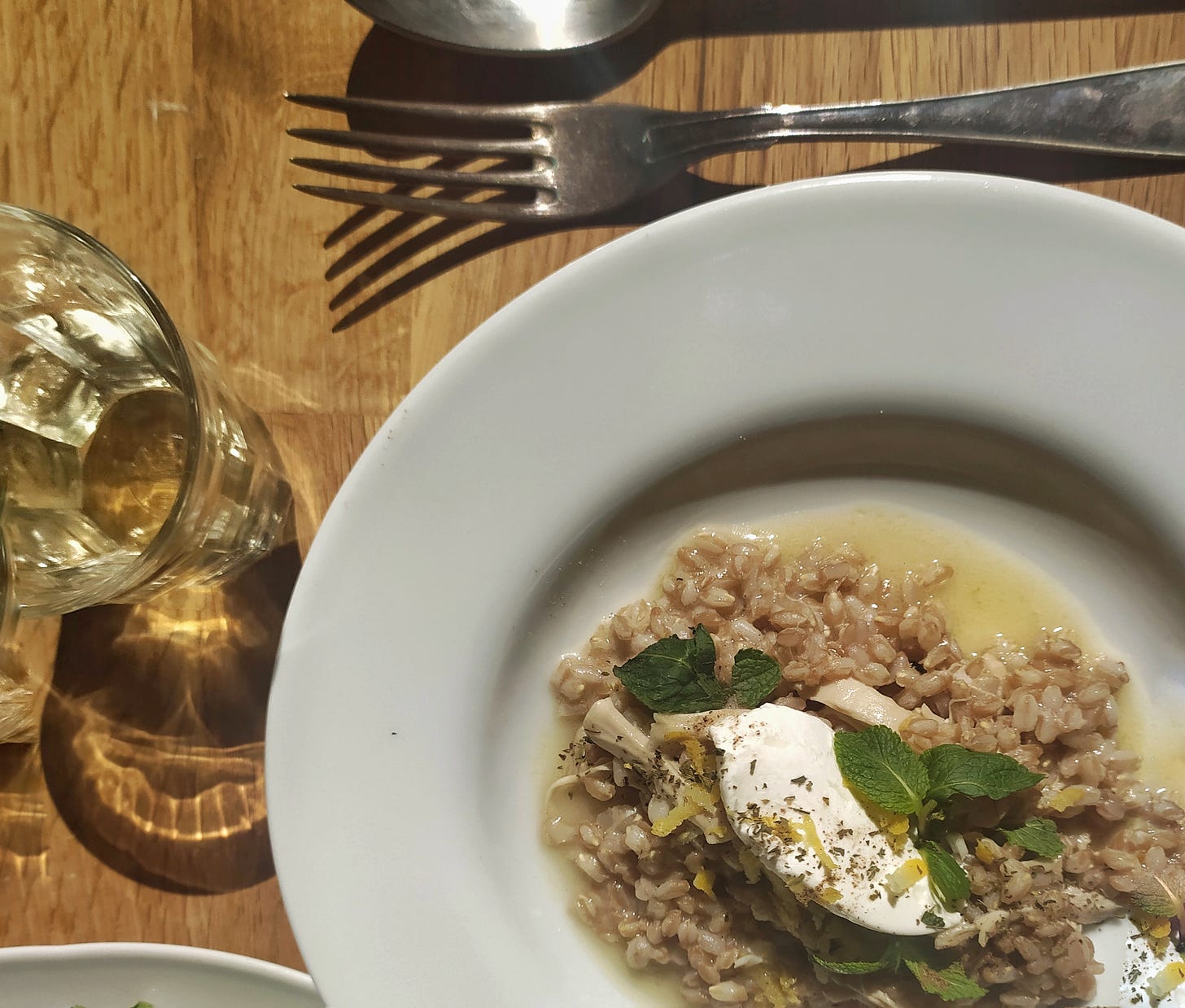In the run up to Easter 1817, one of the most enthusiastic carnival goers in Venice was famously Lord Byron. According to his letters, poetry’s original rockstar threw all that was mad, bad and dangerous to blow into the last era of the Serenissima’s high-society parties, going to bed at dawn before a brisk gallop along the Lido to blow away the hangover before hitting up the next Contessa. Yet there was something a bit effortful about the performance, as though Europe’s most famous writer was trying a bit too hard to live up to the image of the roistering rake. You can imagine his diary- ball, whorehouse, duel, swim back along the Grand Canal- night after night after unforgiving night, when maybe all he wanted to do was have a quiet night in with an omelette and a peach. His club foot gives him trouble, he worries about his weight, he catches the clap from a certain lady, the menagerie in the palazzo is filthy and unruly, his mistress, Marianna Zegati is giving herself airs… no wonder he took the chance to row off three times a week to the island of San Lazzaro and its peaceful community of learned Armenian monks.
Venice had always been a multi-faith city, and in Byron’s time the Armenian community had been worshipping in their church , Santa Croce degli Armeni, for around six hundred and fifty years. The Mechitar friars at San Lazzaro arrived much later, in 1715, when their original community at the great Venetian port of Modon (Methoni) in the Peleponnese was sacked by the Turks. Venice offered asylum and the Mechitars made their home on this “comfortable, well-kept, rather suburban sort of island”, which remains one of the most important repositories for ancient Armenian culture in the world. The monastery was spared dissolution by Napoleon in 1797 and the brothers retained their school in the city proper at Ca’Zenobio degli Armeni in Dorsoduro; dilapidated and immensely grand, it can still be visited for concerts and art exhibits.
Byron visited his teacher, Father Aucher, for four months, and is very much a presence in the monastery’s gloriously eclectic museum, where it is possible to view the Armenian grammar to which he made a (much exaggerated) contribution.
His Armenian might have been overrated, but Byron’s stay in Venice did produce Verse 44 of Beppo, the most brilliant rendering of the sound of the Venetian language, which he learned (in bed, wearily?) from the demanding Mrs Zegati:
I love the language, that soft bastard Latin,
Which melts like kisses from a female mouth,
And sounds as if it should be writ on satin,
With syllables which breathe of the sweet South,
And gentle liquids gliding all so pat in,
That not a single accent seems uncouth,
Like our harsh northern whistling, grunting guttural,
Which we’re obliged to hiss, and spit, and sputter all.
The genius is in making the English be what the words claim it can’t be, supple and sinuous, that assonant flow of sliding grace around the consonants.
The friars’ presence in Venice is less expansive but more tangible than Byron’s- their printing press, the first to produce Armenian in Western Europe, still produces books from its twelve-language type, they still make and sell their celebrated rose petal jelly and if you book a visit the monks will still sprint down to the jetty and squabble gently about how you should best moor your boat.
The community will be celebrating Easter on April 12th this year, so rather than suggesting yet more lamb and chocolate recipes, we thought we would take our inspiration from them. Traditionally, the Armenian Easter table includes baked fish (a symbol of Christ), rice pilaff with dried fruit, boiled greens including sorrel, coloured eggs and gata, a vanilla-flavoured pastry. There’s not a huge amount of literature about the cuisine of the first officially Christian country in the world, but we took a look at the Oriental Cookbook: Wholesome, Dainty and Economical Dishes of the Orient (1913) by Ardashes H. Keoleian. Ingredients include sumac, quince, sour plums and stuffed strawberry leaves; there are some rather alarming recipes, including oysters with whiskey and whole boiled goose, as well as intriguing way of roasting small game birds whole in a scooped out aubergine. Mussels stuffed with pistachio and sweetbread salad recall Byzantium, and the use of nuts and spices would have been familiar to the Venetian lay-brothers who staffed the island’s kitchens.
Many of the puddings are variations on creams and custards, including a fascinating version of biancomangiare, blancmange, made with sugar and pounded chicken, which also appears in medieval Venetian cuisine. We left that one out though. Our Armenian-inspired lunch of Chicken Harissa, Watercress and Hazelnut Salad and Orange Flummery is light, fresh with herbs and lemon and properly, post-Lentenly indulgent. It’s nice to think of poor exhausted Byron envying the friars as they tucked into wholesome dainties with whipped cream.
Detail of how to visit San Lazzaro can be found by clicking here.
CHICKEN AND SPELT with MASCARPONE and HERBS
The epitome of simple with a generous tablespoon of unLenten joy...and herbs
This is our take on, or more realistically inspired by, the delicious simplicity of a very old Armenian dish, HARISSA. Unlike the African spice, this dish traditionally has only two components and is made with a lot of care and time-two of the most warming and nutritious ingredients. Our twist aims to emphasise this fact but includes also a generous dollop of creaminess with mountains of fresh herbs to celebrate the easter period.
Serves 4
Ingredients
400 gr Spelt
4 chicken thighs
1 carrot
1 onion
1 celery
1/2cup Marsala
4 tablespoons of Mascarpone
1 lemon, zest
Sichuan pepper or just black pepper (lots and lots)
Fresh herbs: Mint, dill, tarragon, coriander, parsley-plenty
Place a 700ml of water on the boil, add the carrot celery and onion, roughly chopped. Add a few pepper corns, bayleaf and any other bits and bobs that you like to have in a stock. Add the chicken and bring to a simmer for 15 minutes. Remove the chicken straight away and shred it once slightly cooled. In another large pan add the spelt and half a cup of the stock and warmed marsala. Stir until all the liquid is absorbed and then add more stock and some of the shredded chicken. Stir thoroughly and then continue adding stock and chicken. Let this simmer and take your time. You will need roughly 20 minutes. Just before serving you can add the herbs. When ready to plate up you will want some of the stock to still be there, the texture is a middle ground between risotto and soup. Serve with a generous teaspoon of mascarpone on top and roughly grated lemon zest, a crack of pepper and plenty of fresh herbs. The lemon mascarpone gives a fantastic textural finish, bringing out the herbs and the richness of the stock-poached meat. Enjoy!
WATERCRESS SALAD with ALMONDS, HAZELNUTS and POMEGRANATE MOLASSES
Armenian cuisine is gleaming with nuts, dried fruits and rich sauces. Much like its surrounding countries. There are understandable overlaps between Iranian and Turkish cuisine but also that of Russia and Syria. In this recipe we wanted to highlight some of their star ingredients, nuts and pomegranate molasses. The latter is a store cupboard saviour that once tried you will never want to be without.
Plenty of salad
1 handful of almonds, lightly toasted and chopped
1 handful of hazelnuts lightly toasted and chopped
Sauce
1/4 pomegranate molasses
1/2 cup of olive oil
1 tsp of mustard
1/4 cup of rice vinegar
ORANGE FLUMMERY
Flummery is a close relative of syllabub and custard. In Armenian cuisine, creams are often made with rice or grains, flavoured with flower-waters, citrus or vanilla. Serving cream with cream sounded obscene until we remembered the beloved Venetian classic, gianduioto- hazelnut chocolate ice cream with whipped cream at Nico’s gelateria on the Zattere. It can be made in a bowl or individual ramekins and turned out, you could scoop it into quenelles with two dessert spoons or just put the bowl in the middle of the table with the whipped cream alongside for general scooping. If you have an antique trifle mould lying around, we will judge you.
NB: This is best made the night before you want to serve it. Feels like a pain, but then the smugness of finding it all ready in the fridge.
Serves:4-6
600ml double cream
3 tbsps caster sugar
Grated rind and juice of 2 oranges (grate first, then juice)
1 tbsp orange flower water
15g gelatine
Variations: You could add a tablespoon of Cointreau or Grand Marnier or use rose water or if you can get your hands on it, carnation water. The porcelain elegance is rather lovely alone, but some fresh berries could be good.
Put the gelatine into a small bowl of cold water and set aside. All the other ingredients go into a pan, bring the cream just to boiling point, stirring to dissolve the sugar. Squeeze the water from the gelatine and stir into the warm cream mixture. Pour into the mould of your choice and refrigerate overnight or for a day if serving in the evening.
Turn out onto plate or saucers and serve with whipped cream.








Easter Sunday dessert for us. Thank you as ever for your inspirational recipes.